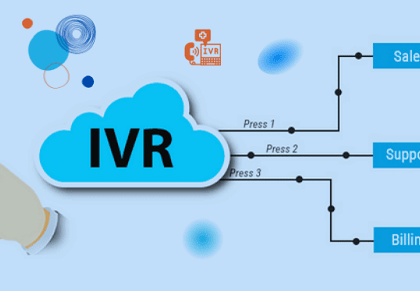In an era dominated by digital advancements and interconnected systems, the significance of cybersecurity has grown exponentially. As our reliance on digital technologies increases, so does the complexity and frequency of cyber threats. This article explores the evolving landscape of cybersecurity in the digital age, highlighting the challenges, advancements, and the critical role cybersecurity plays in safeguarding our digital future.
1. The Digital Transformation and Its Implications:
The digital age has ushered in a transformative era where virtually every aspect of our lives is influenced by technology. From personal communication to critical infrastructure, digital systems underpin the functioning of societies and economies. However, with this increased digitization comes the inherent risk of cyber threats, ranging from data breaches to sophisticated cyber-attacks.
2. The Proliferation of Cyber Threats:
As our digital footprint expands, so does the attack surface for cybercriminals. Cyber threats have evolved from simple viruses and malware to complex and targeted attacks such as ransomware, phishing, and advanced persistent threats (APTs). The motives behind these attacks vary, encompassing financial gain, political espionage, and even ideological motivations.
3. The High Stakes of Cybersecurity:
The consequences of a cybersecurity breach can be severe, impacting individuals, businesses, and governments alike. Stolen personal information can lead to identity theft, financial losses, and reputational damage. For businesses, a data breach can result in financial losses, legal repercussions, and a loss of trust from customers. In the realm of national security, cyber-attacks on critical infrastructure pose a significant threat, potentially disrupting essential services and compromising public safety.
4. Advanced Persistent Threats (APTs): The Silent Invaders:
APTs represent a sophisticated and prolonged form of cyber-espionage, often orchestrated by nation-states or highly organized cybercriminal groups. These attacks involve a careful and targeted approach, aiming to remain undetected within a network for an extended period. APTs can have far-reaching implications, compromising sensitive information and posing a significant challenge to traditional cybersecurity measures.
5. The Role of Artificial Intelligence in Cybersecurity:
In the ongoing cat-and-mouse game between cyber attackers and defenders, artificial intelligence (AI) has emerged as a powerful tool for both sides. Cybersecurity professionals are increasingly leveraging AI to analyze vast amounts of data, identify patterns, and detect anomalies indicative of potential threats. On the flip side, cybercriminals are also employing AI to automate attacks, making them more sophisticated and evasive.
6. Securing the Internet of Things (IoT):
The proliferation of IoT devices, from smart home appliances to industrial sensors, adds another layer of complexity to cybersecurity. These devices, often characterized by limited security measures, can become vulnerable entry points for cyber-attacks. Securing the IoT requires a comprehensive approach that includes device-level security, robust encryption, and network monitoring to detect and prevent potential threats.
7. Ransomware: A Growing Menace:
Ransomware attacks have witnessed a surge in recent years, targeting individuals, businesses, and even critical infrastructure. These attacks involve encrypting a victim’s data and demanding a ransom for its release. The financial impact of ransomware attacks can be severe, and the evolving tactics employed by cybercriminals continue to challenge cybersecurity professionals.
8. Cybersecurity in the Business Landscape:
For businesses, cybersecurity is no longer just an IT concern; it is a fundamental aspect of risk management and corporate governance. As organizations digitize their operations, from cloud adoption to remote work infrastructure, the attack surface expands, necessitating robust cybersecurity measures. Cybersecurity frameworks, risk assessments, and employee training have become integral components of a comprehensive cybersecurity strategy.
9. Government Initiatives and Collaborative Efforts:
Governments worldwide recognize the gravity of cyber threats and the need for concerted efforts to address them. Many countries have established cybersecurity initiatives, frameworks, and agencies to enhance national cybersecurity resilience. International collaboration is crucial in tackling cross-border cyber threats, and initiatives like information sharing and joint cybersecurity exercises are becoming increasingly prevalent.
10. The Human Factor in Cybersecurity:
While technological solutions play a crucial role in cybersecurity, the human factor remains a significant vulnerability. Social engineering tactics, such as phishing attacks, exploit human psychology to gain unauthorized access. As such, user education and awareness training are essential components of a robust cybersecurity strategy.
11. The Ethical Dilemmas of Cybersecurity:
As the capabilities of cybersecurity tools advance, ethical considerations come to the forefront. Questions about privacy, surveillance, and the responsible use of cyber capabilities prompt a broader societal conversation. Striking a balance between cybersecurity measures and individual rights is an ongoing challenge in the digital age.
12. Future Trends and Challenges:
Looking ahead, the future of cybersecurity is fraught with both opportunities and challenges. The integration of quantum computing, the rise of 5G technology, and the continuous evolution of AI will shape the cybersecurity landscape. However, the same technologies that offer solutions also present new challenges, requiring proactive and adaptive approaches to stay ahead of emerging threats.
The growing significance of cybersecurity in the digital age is a testament to the evolving nature of cyber threats and the imperative to protect our interconnected world. As technology continues to advance, so must our cybersecurity measures. A holistic and collaborative approach that combines technological innovation, governmental initiatives, and individual responsibility is essential in safeguarding our digital future. The stakes are high, but with vigilance, education, and ongoing advancements in cybersecurity, we can navigate the complexities of the digital age and mitigate the ever-present risks of cyber threats.




